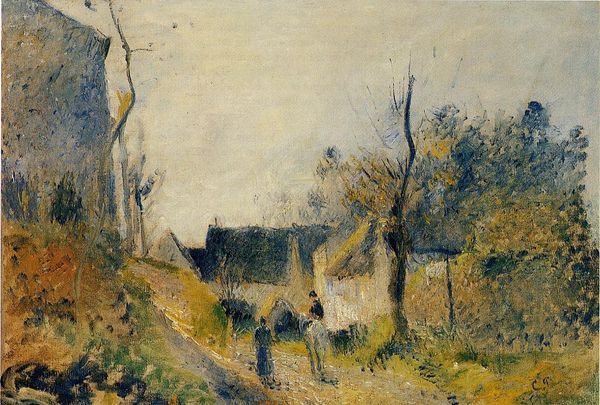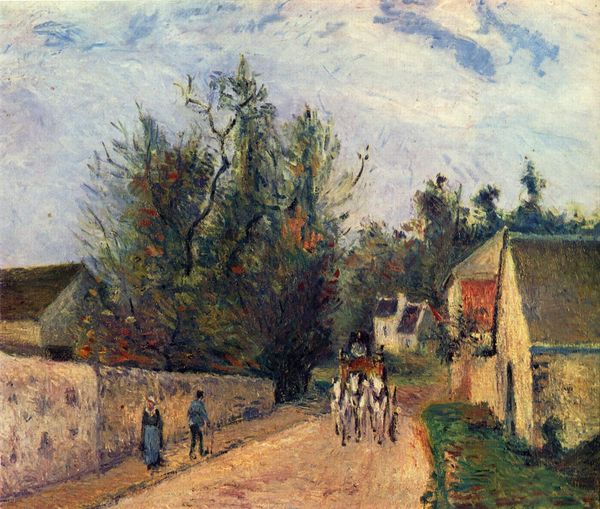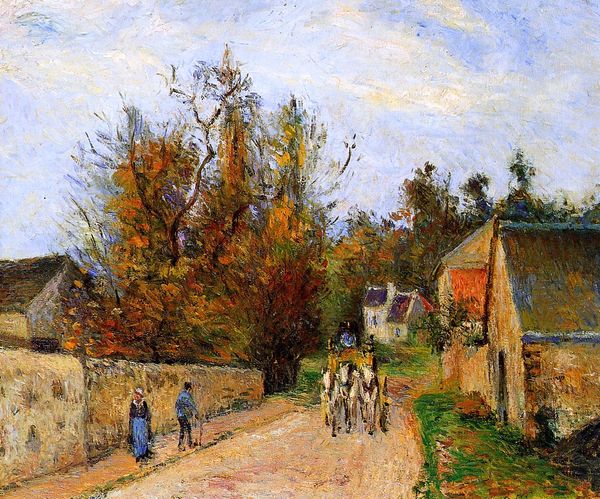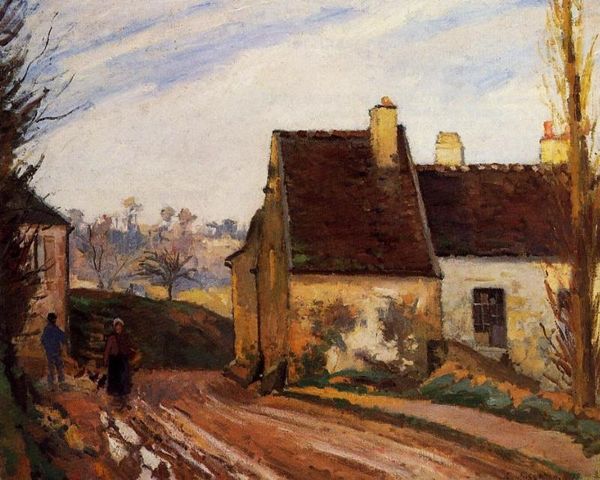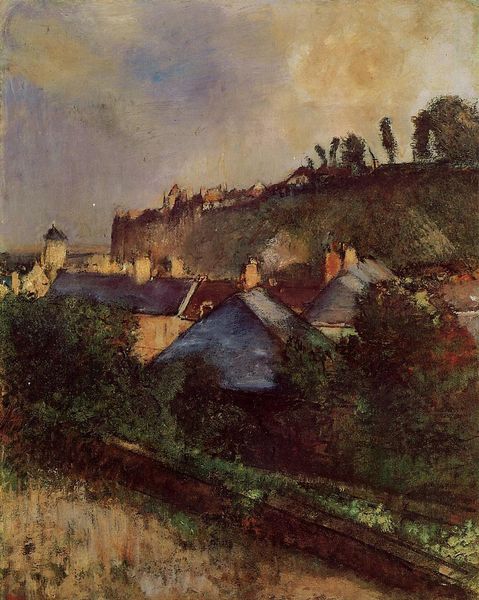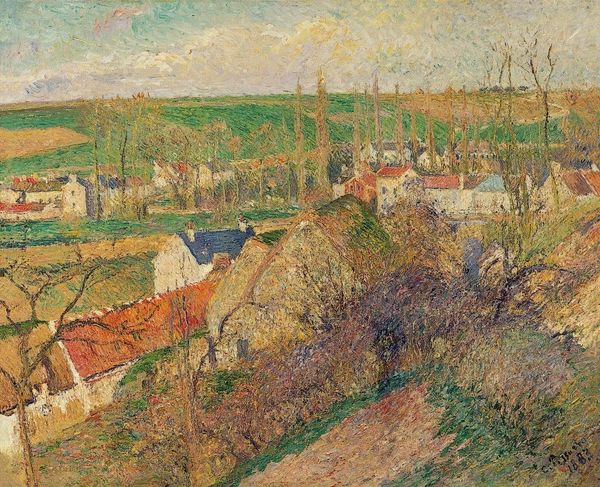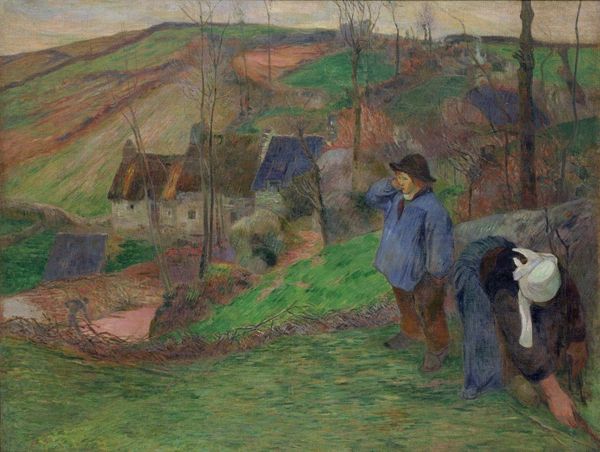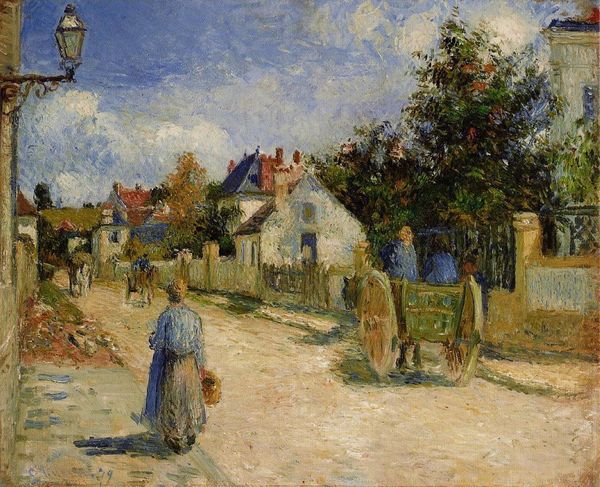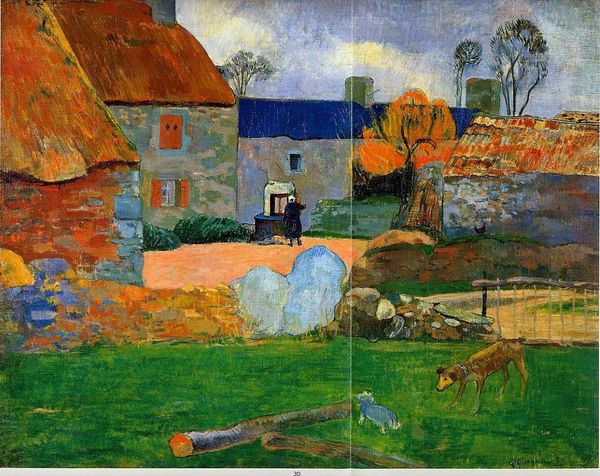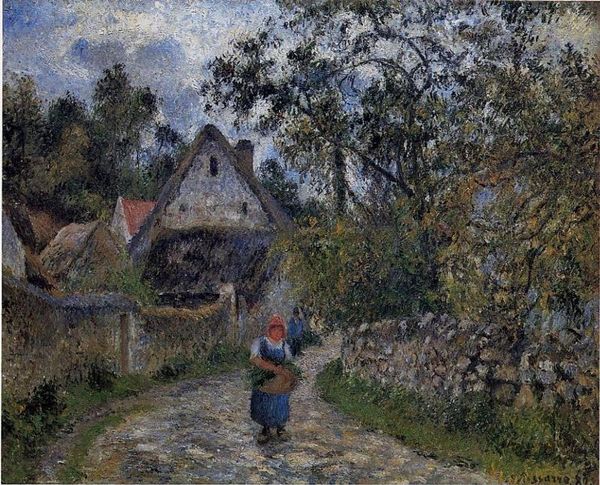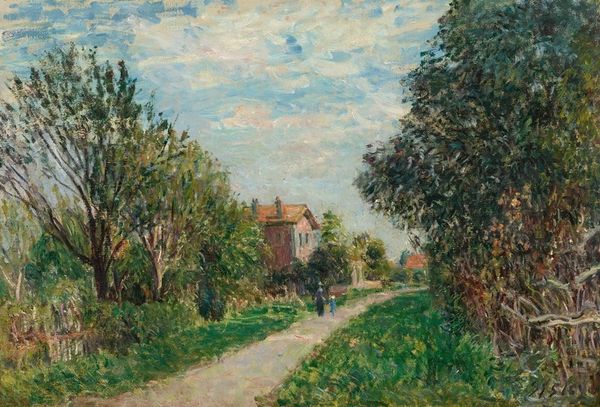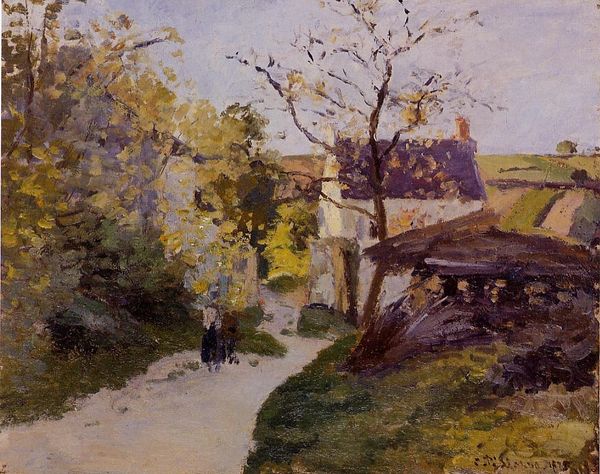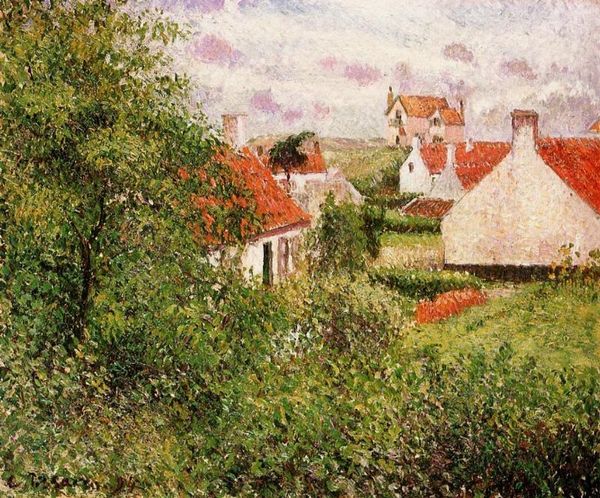
plein-air, oil-paint
#
impressionism
#
plein-air
#
oil-paint
#
landscape
#
impressionist landscape
#
oil painting
#
cityscape
#
genre-painting
Copyright: Public domain
Editor: Looking at "A Part of Jallais, Pontoise" painted in 1875 by Camille Pissarro using oil paints, I’m immediately struck by how ordinary the subject matter feels. It’s not a grand historical scene, just a village path. What can you tell me about this choice? Curator: You’re right, it’s decidedly un-monumental. This embrace of the everyday, painted en plein air, was a conscious move by the Impressionists like Pissarro. They were pushing back against the established art world, which favored academic painting, historical narratives and portraits of the elite. Pissarro found beauty and worth in the ordinary lives of the peasants and the landscapes around them, don't you agree? Editor: Yes, but what do you mean by “established art world?" Was it hard for art like this to gain acceptance? Curator: Absolutely. Think about the Salon system, the official art exhibitions controlled by the Academy des Beaux-Arts. Artists like Pissarro, with their broken brushstrokes and non-idealized subjects, were frequently rejected. Their struggle highlights the power of institutions to shape artistic taste and determine what is deemed “art.” Can you imagine exhibiting at the Salon with something like this back then? Editor: It’s like they’re democratizing art, choosing regular life instead of mythological stories. They weren’t trying to portray history but to represent society at the time. The politics of imagery... I see! Curator: Precisely. The Impressionists were documenting their world, and their choices reflected a shift in social values, a growing interest in the lives of the common person. Now, does that make you see this humble scene any differently? Editor: Definitely. Knowing the context makes the painting far more engaging. It isn't just pretty scenery. It's a statement about art and society. Curator: It’s always valuable to examine artwork within its socio-historical framework. It encourages us to ask what kind of narratives art is reflecting or, in this case, disrupting. Editor: Thanks, this was a different way to explore art for me. I see so many doors open for new interpretations when you connect art with socio-political moments!
Comments
No comments
Be the first to comment and join the conversation on the ultimate creative platform.
